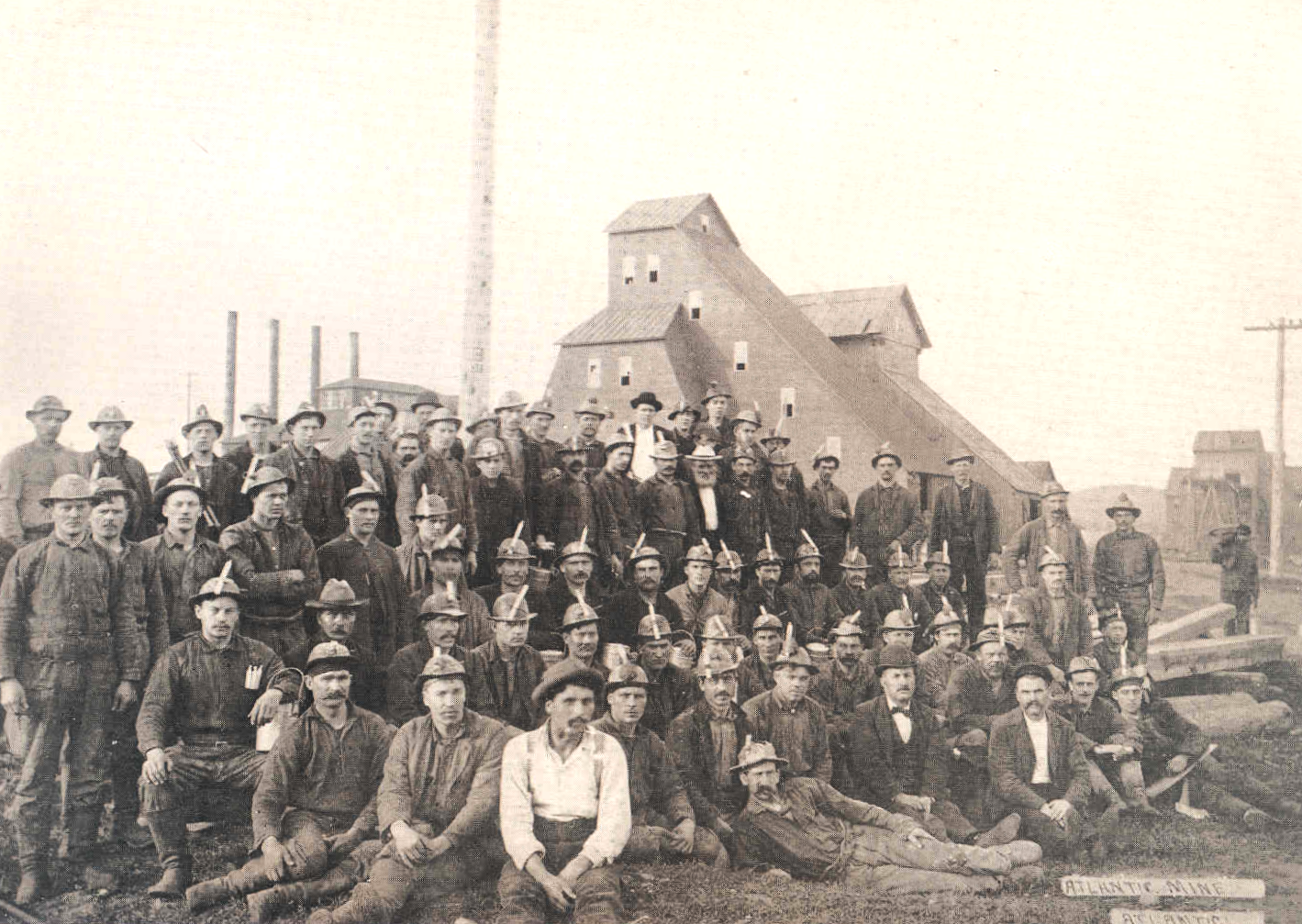- Details
- Hits: 2831
Mine: Atlantic Mine, Houghton, MI
Adams Mining Company → Atlantic Mine → Abandoned
Operated for:
From: 1872
Owned by: Atlantic Mining Company
Produced: Copper Ore
Method: Underground, 6 shafts, lettered A-F. Deepest 3,000 on incline.
Railroad connection: Atlantic & Lake Superior railroad
Stamp Mill/Smelter: Atlantic Mill
Until: 1906
Lifetime Production: 121 million tons over lifetime.

 Image info: Top, a view of the employees at Atlantic Mine, posing in front of a shaft house. 2nd image, a Sanborn insurance map shows the locomotive house at the Atlantic Mine in 1917. [SBM]
Image info: Top, a view of the employees at Atlantic Mine, posing in front of a shaft house. 2nd image, a Sanborn insurance map shows the locomotive house at the Atlantic Mine in 1917. [SBM]
Notes
Atlantic Mine was a copper mine located southwest of Houghton (between Houghton and South Range) in Houghton County. It was first worked in 1872 by the Atlantic Mining Company and had a total of 6 shafts. It was later consolidated with the Pewabic and Adams Mining companies. It was consolidated into the Copper Range Company in 1925. It was a profitable operation. Atlantic Mine is now known as Pavoila.
The Pacific Mine is north of this property, the Isle Royale and undeveloped lands are on the eart; the Isle Royale and undeveloped lands on the south, and St. Marys Canal lands on the west. The mine trct is 640 acres.
The company owned its own railroad, the Atlantic & Lake Superior railroad, to bring ore to the company's crushing mill in Houghton, and later on Lake Superior.
Links
Interesting website, click here.
Time Line
1901. Shareholders include Joseph Gay, President; and John Stanton, secretary treasurer.
1901. Shafts of the mine are lettered in order from north to south from "A" to "F", giving a total of six shafts. Shaft "A" was started late in 1897, at an angle of 54 degrees. It is 9x20' inside of timbers with three compartments, two of which are skipways and the third for men and pipes. A rockhouse 35x67 and 84 feet high has four rock-crushers. The boiler house is 38x50 feet in size. It contains a 26x48 double Corliss engine of Allis-Chalmers manufacture. [CHBK]
1904. Cave-ins become a problem, caused by "air blasts". Small tremors are felt on surface. [MINDAT]
1905. Hanging wall suffered a catastrophic collapse. [CCE]
1905. The shafts had "drawn-in" so much that skips could not operate without scraping the hanging wall a short distance in. When the subsidence finally ended in 1906, the shafts were so narrow that the mine was abandoned. It is estimated that approx. 6 million tons of ore remain in the mine.

